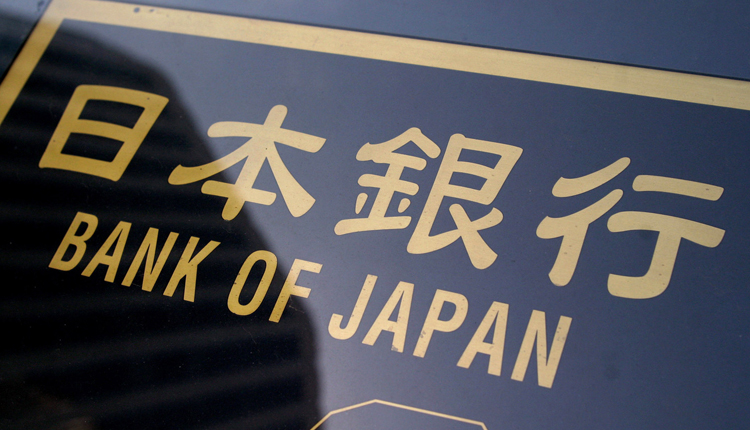Bank of Japan Governor Haruhiko Kuroda said he will seek to hit his inflation target “step by step,” dropping a pledge to meet it as soon as possible in a sign of the central bank’s waning conviction that it could achieve its elusive price goal.
Conceding it was taking longer than expected to achieve 2 percent inflation, Kuroda said global risks have “come to warrant further attention” as China’s growth slows and trade frictions hurt business sentiment.
He also said the BOJ must be mindful of the rising costs of prolonged monetary easing, such as the chance years of near-zero rates could hurt financial institutions’ profits and discourage them from boosting lending.
“The BOJ will proceed step by step toward achieving its price target, while taking into account in a balance manner not only the benefits of monetary easing but also its costs,” Kuroda told an annual meeting of business lobby Keidanren on Wednesday.
Up till now, Kuroda has repeatedly said the BOJ will seek to achieve 2 percent inflation “at the earliest date possible.”
The change in language underscores the rising hurdle for meeting the BOJ’s price goal, as fears of a global slowdown cast doubt on the central bank’s view that robust exports will boost growth and help fire up inflation.
Uncertainty over U.S. President Donald Trump’s policies and concern over a darkening global economic outlook sent Japan’s Nikkei average plunging to a 20-month low, and into bear market territory, on Tuesday.
The dollar also slid to a four-month low against the yen, triggering verbal warnings by Japanese policy makers worried about the damage a strong currency could inflict on the country’s export-reliant economy.
The BOJ is caught in a bind. With inflation distant from its target, it is forced to maintain a massive stimulus despite the negative spillovers. Its dwindling policy ammunition limits the ability to ramp up stimulus to prevent another recession.
The dilemma has created a rift within the BOJ with its board members disagreeing on ways to address the dangers of prolonged easing, minutes of the October rate review showed.
Kuroda said the situation has changed from when the BOJ deployed a massive asset-buying program in 2013, when such a drastic action was critical to pull Japan out of stagnation.
Now, the economy is in good shape but inflation remains weak and closer attention is needed to overseas risks, he said.
“In complex times like now, what’s required is to persistently continue with the current powerful easing while weighing the benefits and costs of our policy in a balanced manner,” Kuroda said.
Aggressive monetary easing has been the cornerstone of Prime Minister Shinzo Abe’s “Abenomics” stimulus policies aimed at eradicating deflation that has plagued Japan for two decades.
Speaking at the same Keidanren event, Abe said Japan’s economic recovery was on a solid footing despite heightening global risks, shrugging off concerns the recent market rout could undermine the successes of Abenomics.
“We’d like you to raise wages so that Japan’s recovery trend can be ensured,” Abe told corporate executives at the event.
